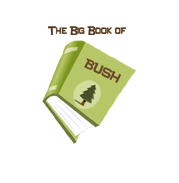|
Can’t See the Forest for the Trees
The Bush Administration’s Forest Policy

• In May, the Bush administration recommended against designating any portion of the virgin land in the Tongass National Forest in southeast Alaska as wilderness, thereby opening 2.5 million acres of forest to development. The Tongass, a vast temperate rainforest, is home to wolves, grizzly bears, wild salmon, and bald eagles.
• The Bush administration wants to overhaul the Northwest Forest Plan, which limits logging on more than 80 percent of 24 million acres managed by the Forest Service and the Bureau of Land Management and requires the Forest Service to protect the habitats of spotted owls, Pacific salmon, and other threatened wildlife.
• Mark Rey, the former timber-industry lobbyist who now oversees the Forest Service, is pushing the idea of "charter forests," a new category of federal lands that would be managed by local interests rather than the federal government. The idea, he says, is to remove "procedural bottlenecks" and make national forests serve the people who live near them–loggers and sawmill operators for instance–rather than the nation as a whole.
• The administration wants to overturn the Roadless Area Conservation Rule, a Clinton-era policy that bans logging and roadbuilding on 58.5 million acres of roadless national-forest land in 44 states. Public comments overwhelmingly support the roadless policy, which may explain why the Forest Service announced plans last fall to let national-forest managers approve small timber sales and mining projects in roadless areas without public input or environmental analysis.
• Bush’s budget for fiscal year 2003 proposes offering 2 billion board feet in federal timber sales, an increase of 30 percent over this year’s timber sales.
• In what a federal judge later described as "an extralegal effort to circumvent the law," Mark Rey approved a 41,000-acre "salvage" logging sale in Montana’s Bitterroot National Forest. Rey argued that the sale of trees burned in wildfires in 2000 had to proceed quickly or the timber would lose value. Environmentalists sued, charging that Rey had bypassed the public appeals process, and settled the case after the Forest Service agreed to remove 27,000 acres of roadless old-growth forest from the sale area.
Up to Top | More on The Big Book of Bush
|